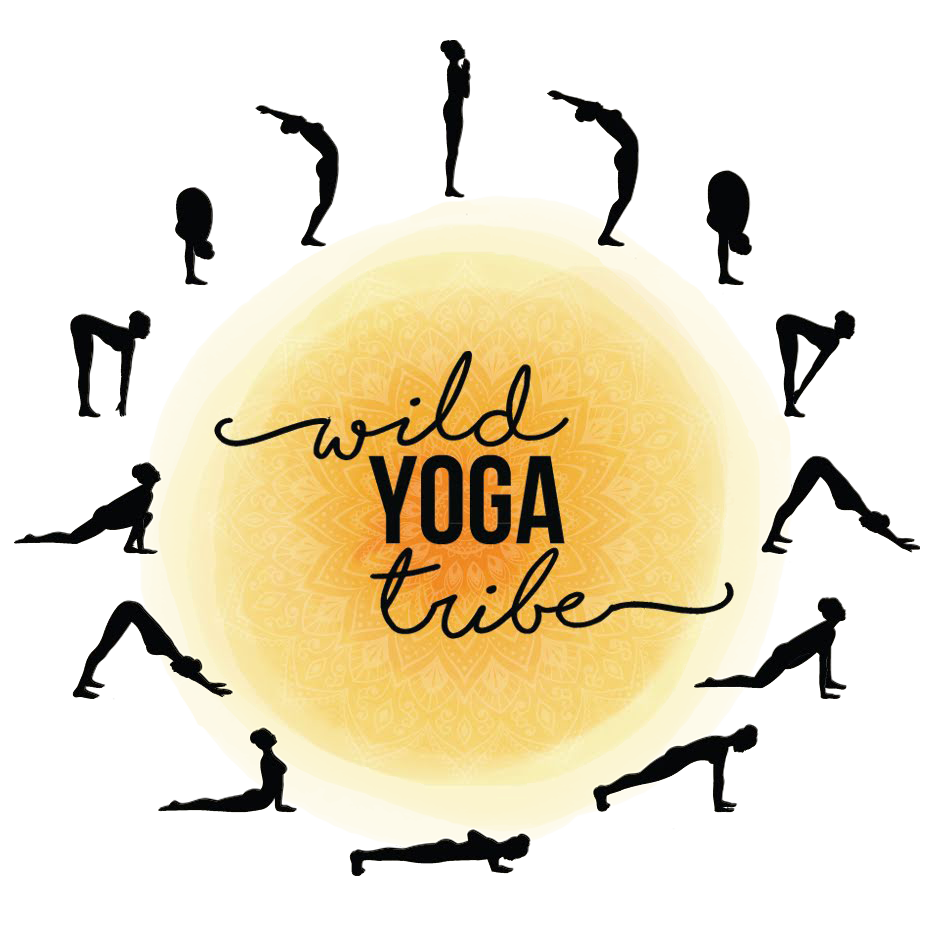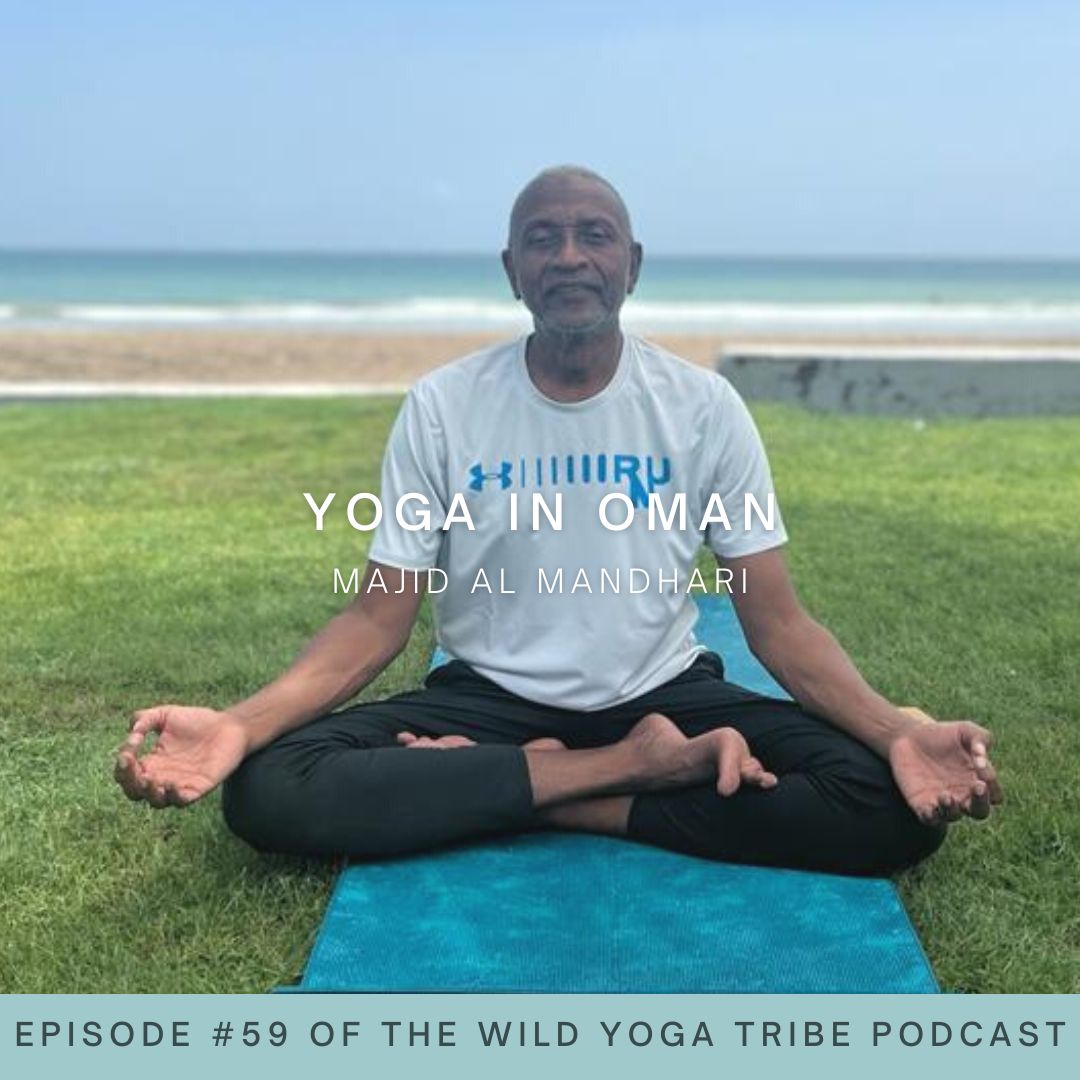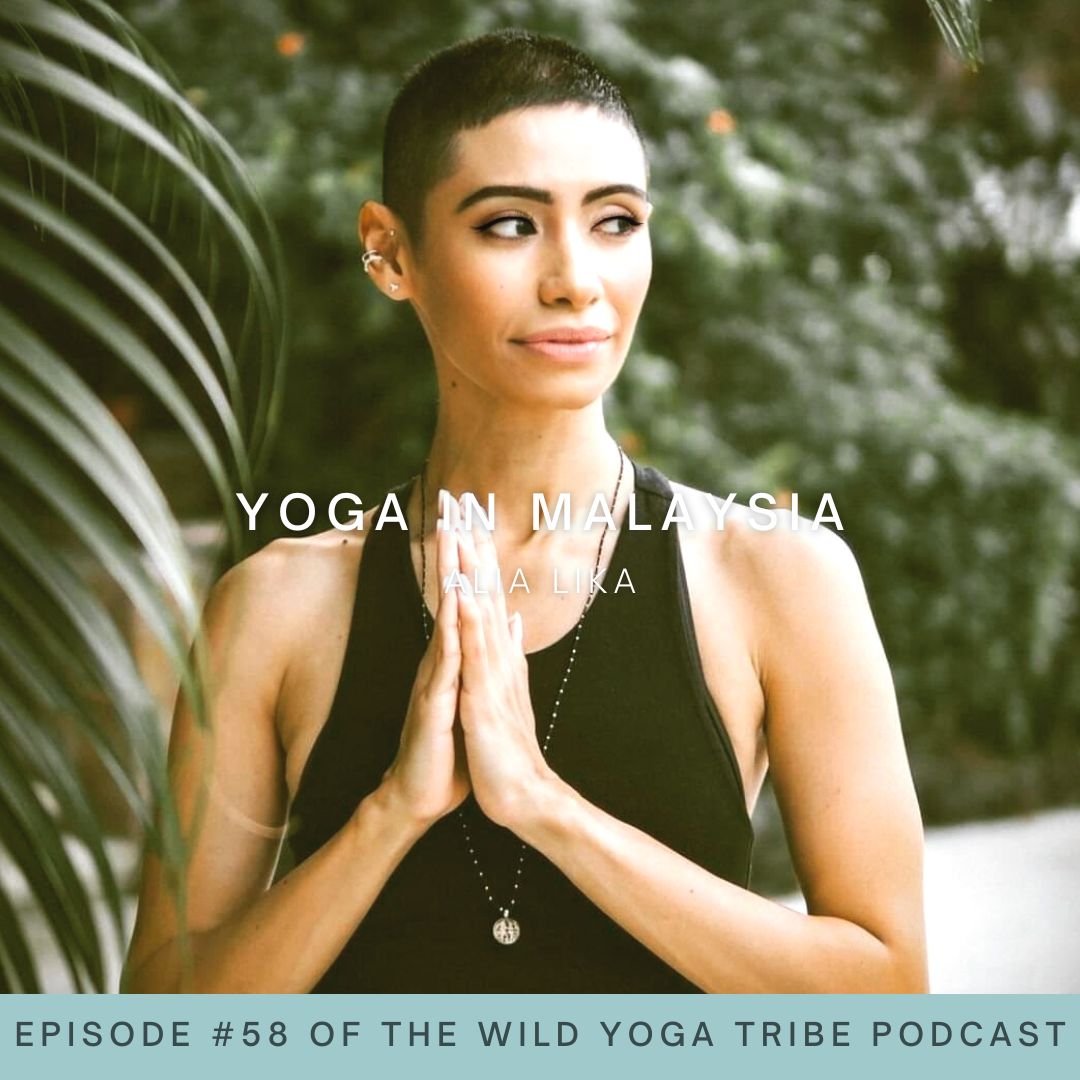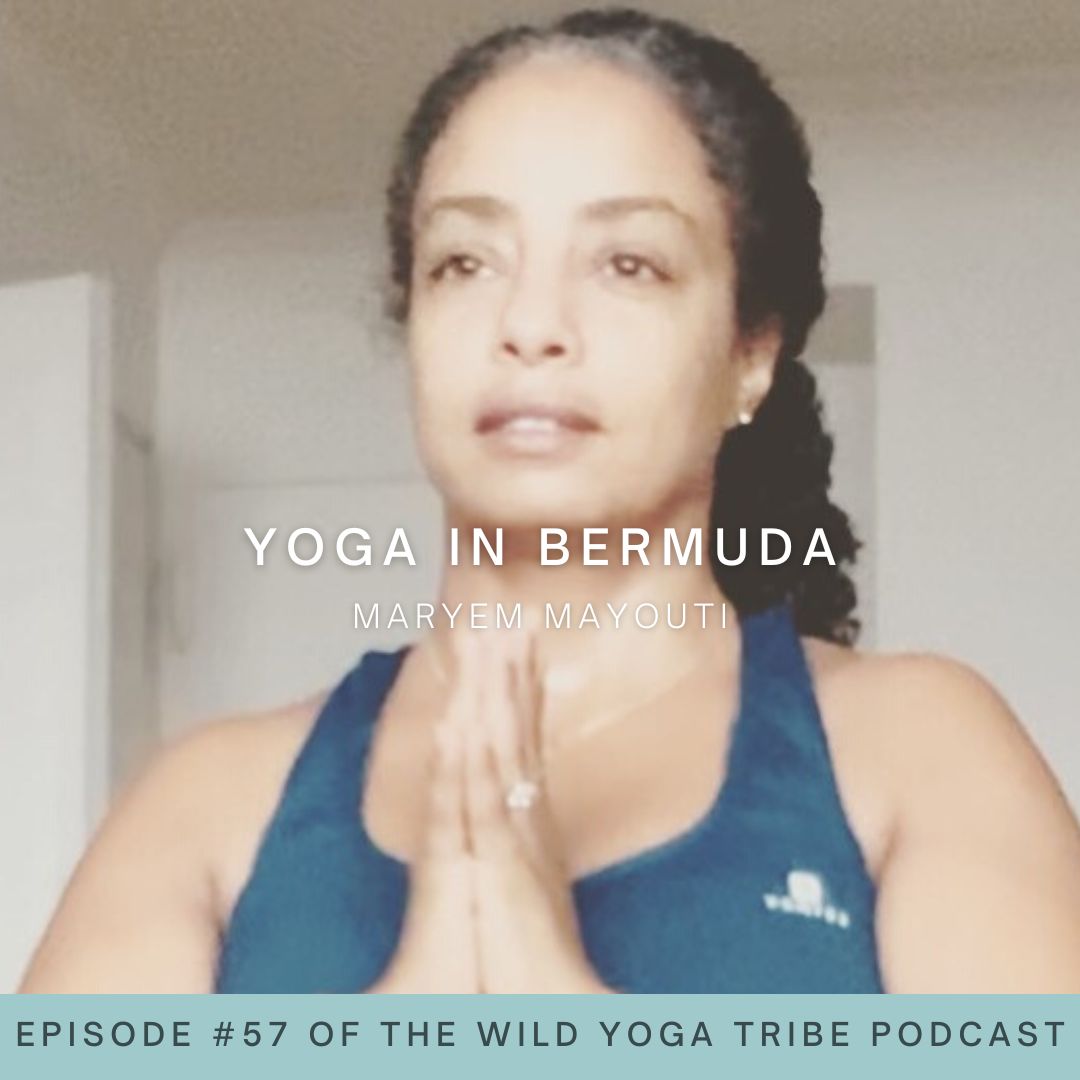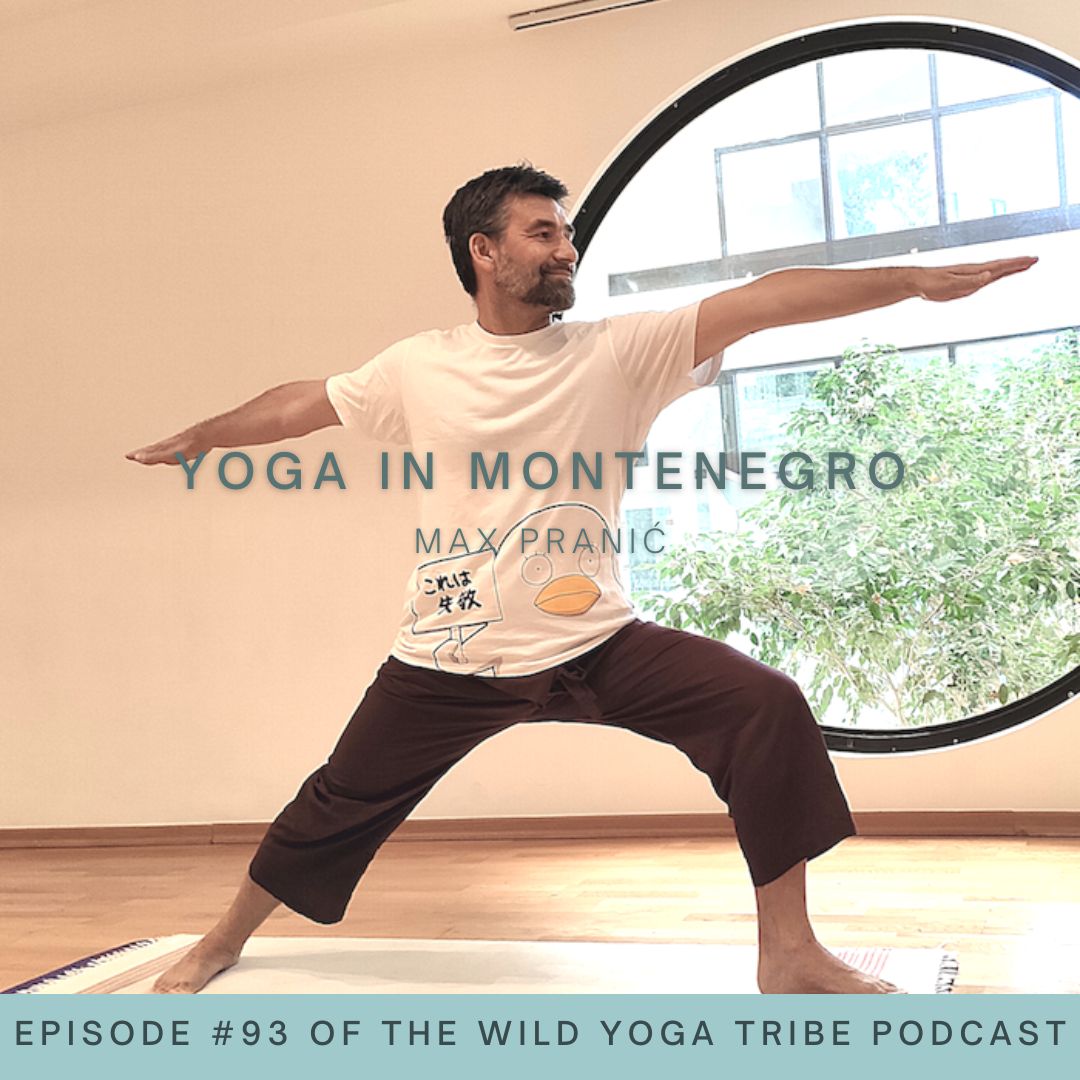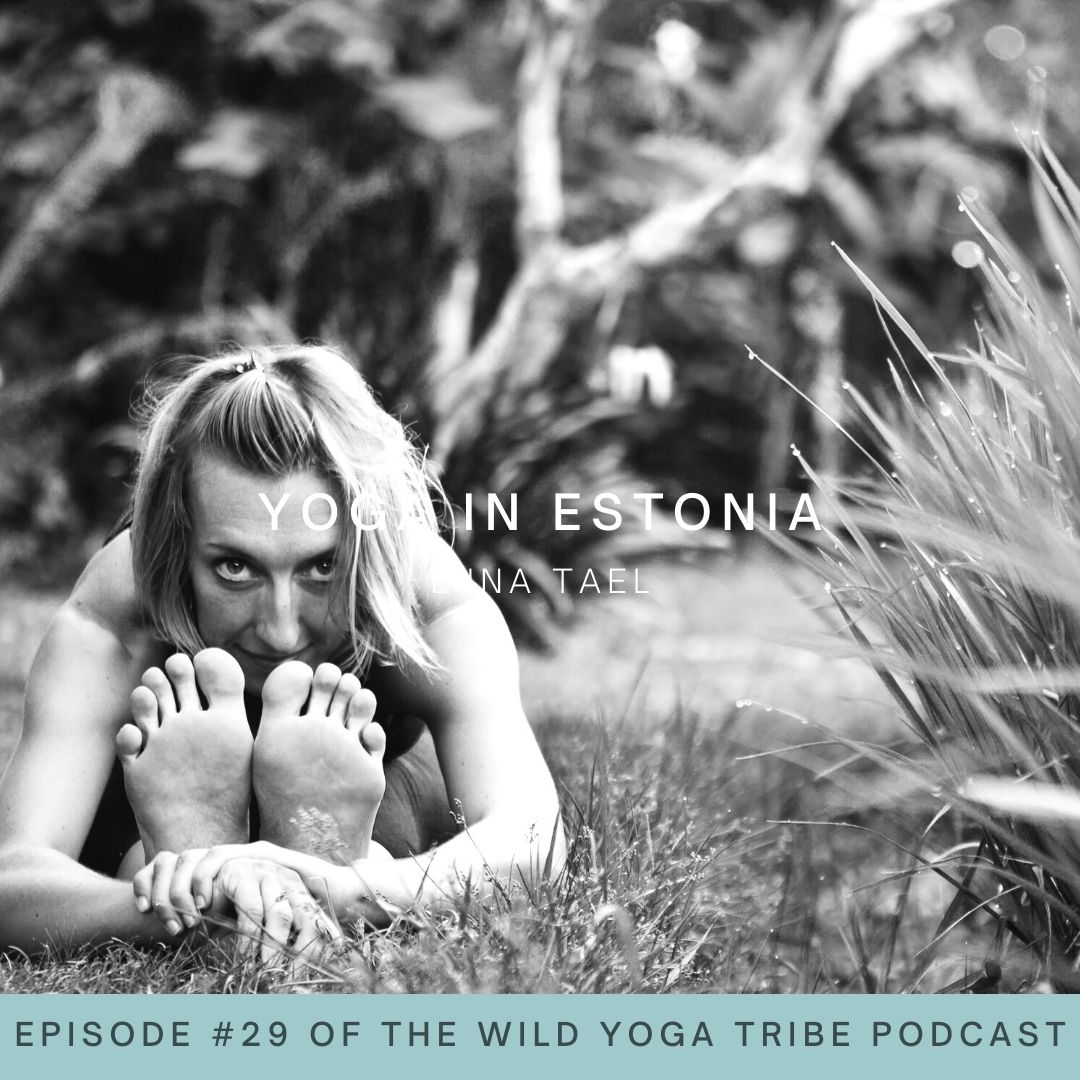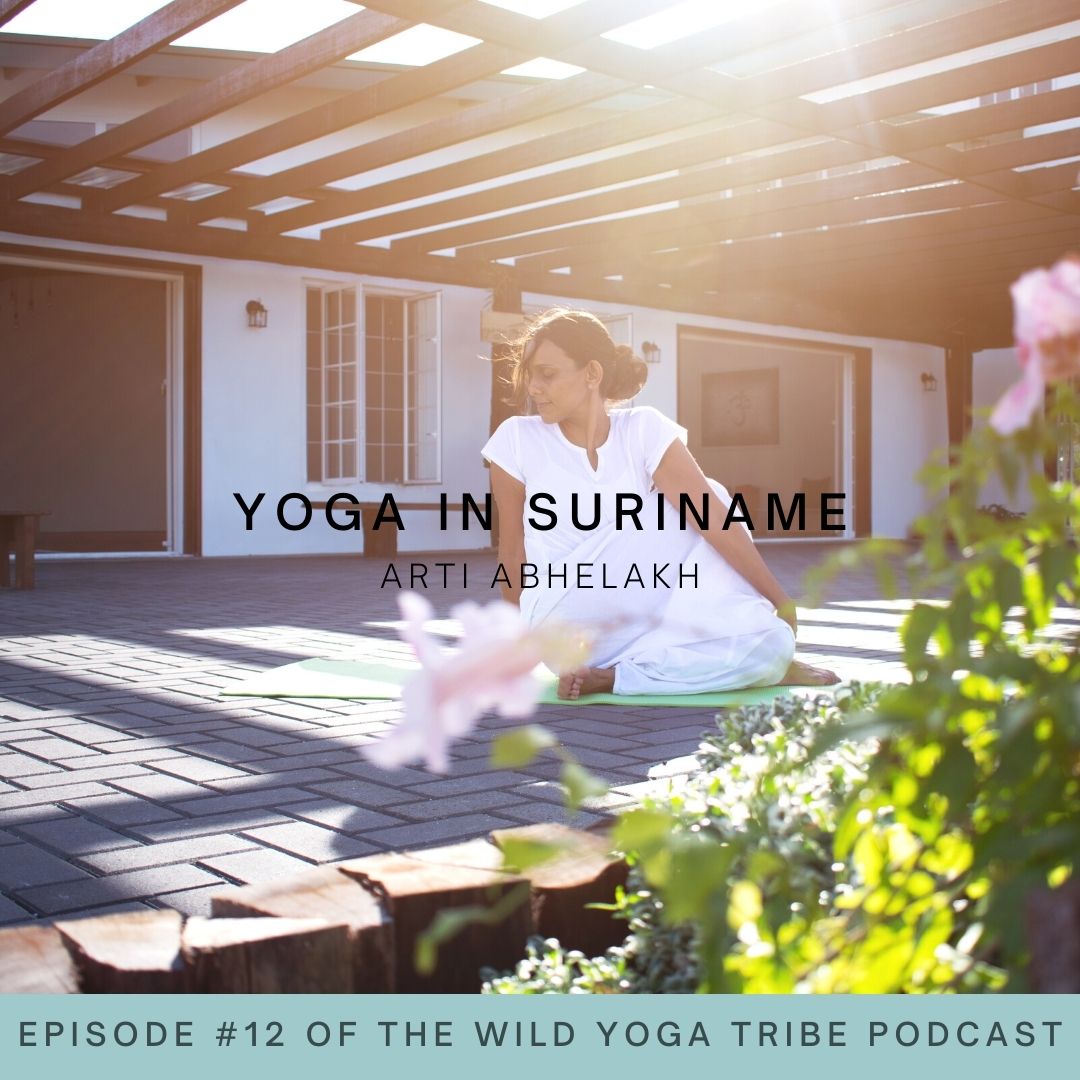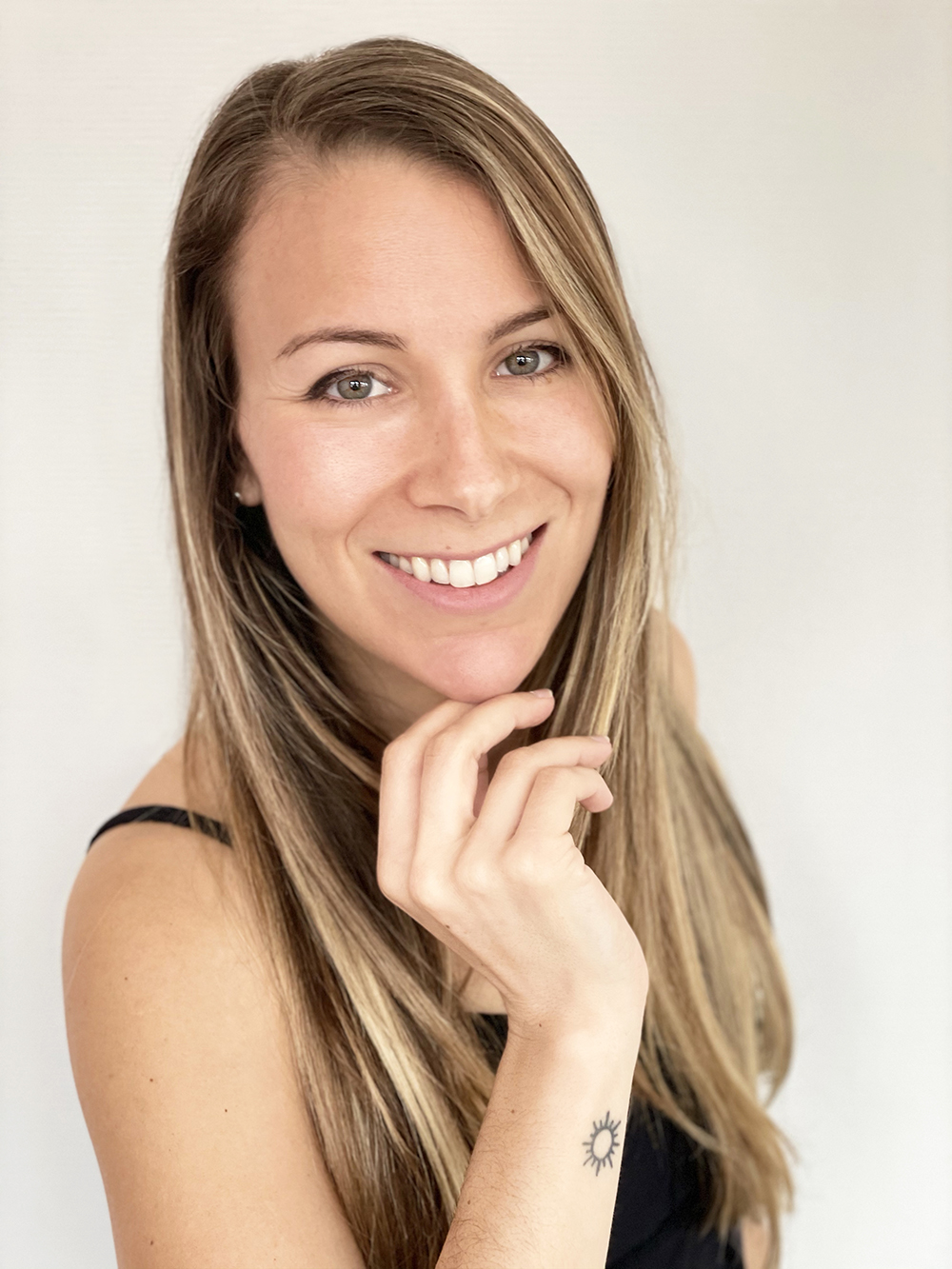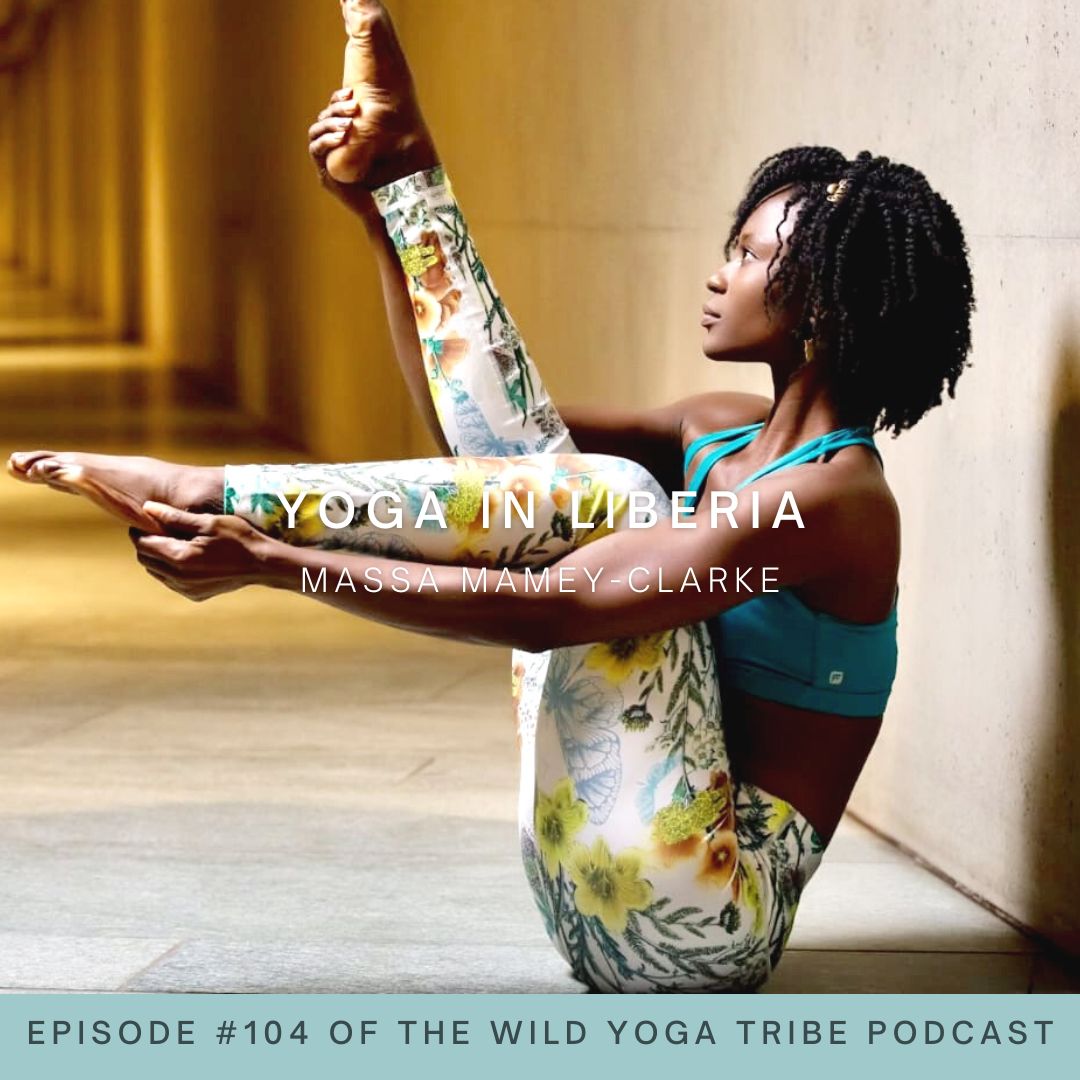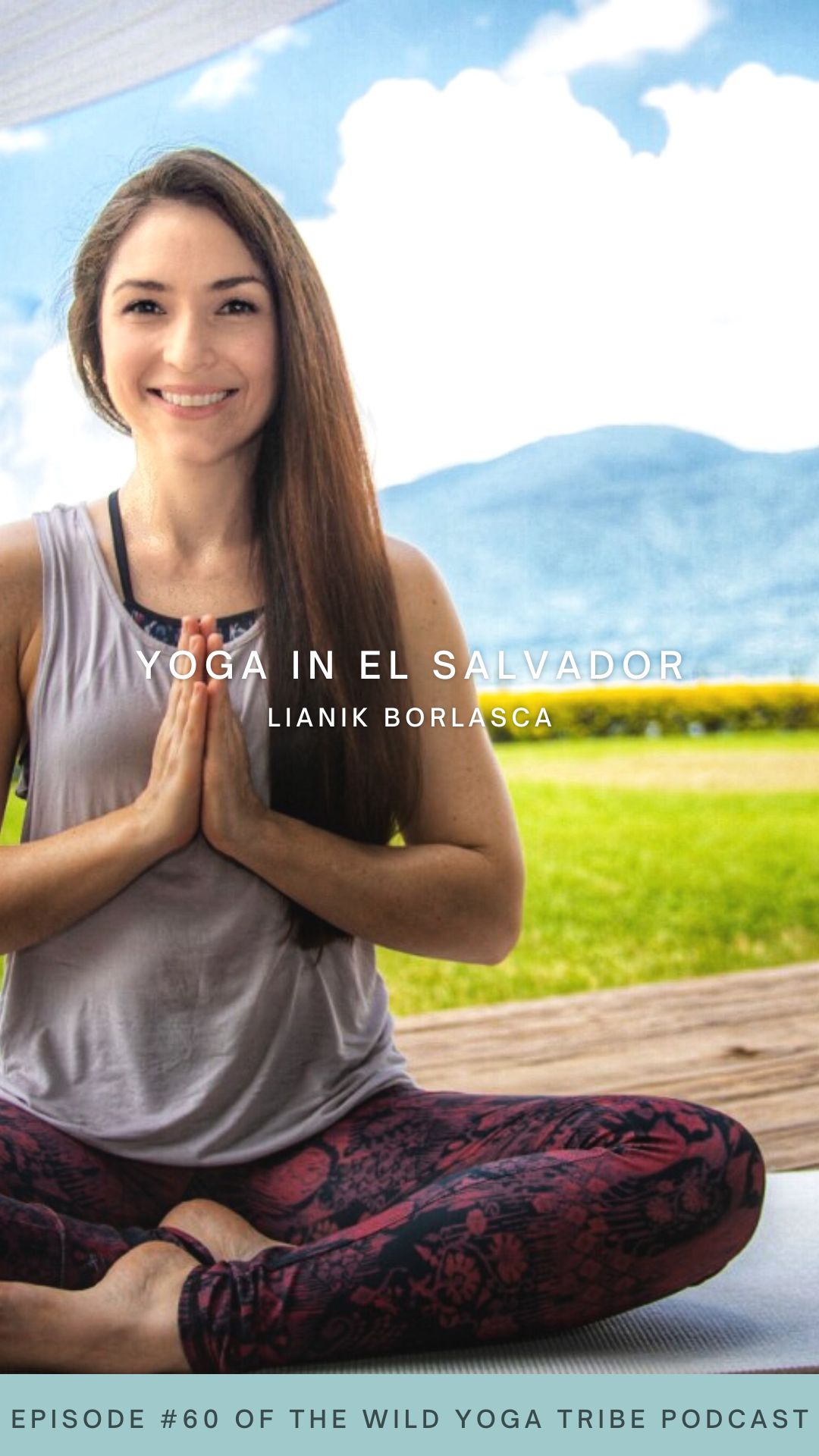
EPISODE #60 – YOGA IN EL SALVADOR
Meet Lianik Borlasca
Meet Lianik Borlasca in a yoga teacher from El Salvador who shares with us all about how yoga is a path and a destination at the same time. Welcome to yoga in El Salvador!
Wild Yoga Tribe Podcast Episode #60 – Paradigms around the Practice – Yoga in El Salvador with Lianik Borlasca
Welcome to Episode #60 of the Wild Yoga Tribe Podcast! My conversation with Lianik Borlasca, a yoga teacher from El Salvador, was multidimensional as we took a deep dive into the spiritual understanding of Jnana and Raja yoga. I hope that this conversation made you curious about the paradigms that exist around yoga, and what we can do to shift them. If you’re looking to tune into a podcast episode that is all about all the dimensions of yoga then this is the conversation for you.
Tell me more about Lianik Borlasca
Lianik Borlasca is a yoga teacher from El Salvador. She is the yoga studio owner of Peace & Yoga in San Salvador. Her passion has been Jñāna and Raja Yoga and the study of the self as the ultimate knowledge. She is also a teacher of Qi Gong, Tai Chi, and is a Reiki Master. Her goal is to integrate everything to teach yoga from different perspectives, to break paradigms around the practice. She has organized International Yoga Day in El Salvador for many years, and has introduced yoga to the public in El Salvador by teaching yoga on several different TV channels in El Salvador.
Besides yoga, she studied Qi Gong and Tai Chi in 2001 and became a “golden dragon” and an instructor really quickly. The teaching techniques were useful for her to integrate into her classes. Also, she got the reiki and Deeksha initiation and became a Master Reiki. The goal was to integrate everything into a single way of teach yoga from different perspectives, and helped her to break paradigms around the practice.
In 2011, she started to organize yearly retreats for her students and whoever could be interested in yoga, developing also different subjects: astrology, reiki, Ayurveda, Prakrtri/Purusha, meditation, detox, etc. and could organize them until 2019 because of the pandemic situation. And she has resumed retreats this year, 2022.
Plus, she has introduced yoga to the radio/tv since 2008 participating in different programs and several tv channels (canal 8, canal 6 and canal 21 and Radio Corazón y Radio Punto). She also organized Yoga Day 2016-2019 for the Salvadoran public.
What to expect in the Yoga In El Salvador episode of the Wild Yoga Tribe Podcast
During the course of our conversation, Lianik wove in so many insights about the multidimensionality of the practice of yoga. She defined Raja Yoga and Jnana Yoga and then expanded upon them, why they are the paths of yoga she has been drawn to. She explained how the physical dimension of yoga, is the most limited of the human being. That’s why the asana practice is so accessible to everyone, and why it’s only the first layer of yoga. It’s only one of the branches— there are seven others!
Lianik shared beautiful thoughts around all the dimensions around the practice and path of yoga.
For the skimmers – What’s in the yoga in El Salvador episode?
- The paradigms around yoga
- Yoga is a path and a destination at the same time
- Raja Yoga and Jnana Yoga
- Limitations exist only in your mind
- The physical dimension is the most limited of the human being
Favorite Quote From Lianik Borlasca
“Yoga is a path and the destination at the same time.”
What’s in the Yoga in El Salvador episode?
Feel like skimming?
The paradigms around yoga
Yoga is a path and a destination at the same time
Raja Yoga and Jnana Yoga
Limitations exist only in your mind
The physical dimension is the most limited of the human being
Connect with Lianik
https://www.instagram.com/peaceyogasv/
https://www.facebook.com/PeaceYogaElSalvador
Support the podcast:
https://www.patreon.com/wildyogatribe
Want more?
https://wildyogatribe.com/thepodcast/
Everything you need is just one click away! Check out all the resources here: https://linktr.ee/wildyogatribe
PODCAST TRANSCRIPTION
Read + Reflect + Respond
Wild Yoga Tribe Podcast Episode #60 – Yoga in El Salvador with Lianik Borlasca Transcript
[00:00:00] Lily Allen-Duenas: Namaste family, and welcome back to the Wild Yoga Tribe Podcast. Today I’m so excited to be joined by Lianik Borlasca. She’s a yoga teacher from El Salvador. She’s also the yoga studio owner of Peace and Yoga in San Salvador, and her passion has been Jnana and Raja Yoga, the study of the self as ultimate knowledge.
She’s a teacher of Qi Gong, Tai Chi and is a Reiki master healer. Her goal is to integrate everything, to teach yoga from different perspectives, to break paradigms around the practice. She’s organized International Yoga Day in El Salvador for many years and has introduced yoga to the public in El Salvador by teaching yoga on several different TV channels.
So thank you so much Lianik, for being here with me.
[00:00:48] Lianik Borlasca: Thank you, Lily. Actually, I am very excited about this interview. Thank you for the opportunity.
[00:00:54] Lily Allen-Duenas: Thank you so much, and I would love to kick off the conversation by asking how yoga first came into your life.
How did yoga first come into your life?
[00:01:01] Lianik Borlasca: Yoga came to me after I studied. I was learning about meditation. I was in high school by then, and meditation was very helpful for me because I was so stressed. There were some stressful situations around high school. About bullying and everything. Meditation helped me to mitigate that situation.
[00:01:30] After I start to meditate, my father discovers me meditating on my own. He by himself used to meditate. Study about philosophy, and everything. So he brought me a book about meditation, with techniques about meditation. It helped me a lot to be ordered in my path, or in my practices about meditation. I started to get deep in that practice after a couple of years of meditating.
Just meditation, No, no Asana practices. I discovered other books, other TV programs. I started to practice by myself with that as reference. By that time there was no proper internet here in this country. So it was super difficult to practice.
[00:02:39] Lily Allen-Duenas: I love that your dad just found you sitting, meditating in a room. Then he came back and handed you a book. What a great dad. Wow.
Dad gives the first meditation book
[00:02:47] Lianik Borlasca: Yes. It was a funny story because it was in a dark room. I was sitting watching a candle, just very organic. Nobody told me what I was. I [00:03:00] had to do that, and then he opened the door. Just saw me and five minutes later he brought me a book, and it was a meditation book.
[00:03:13] Lily Allen-Duenas: Love that. It sounds like yoga and meditation have both been great helpers and saviors in your life when you’ve been really stressed and overwhelmed. It seems like these practices come back to you, time and again.
[00:03:26] Lianik Borlasca: Yeah, actually, I started to practice yoga. When I was at college I had maybe one year or so of beginning my architecture career in the university. It was super stressful. So stressful. I had to be 16 or 17 years old by then.
Meditation and the asana practice yoga practice, it was really therapeutic for me. Because it helped me to get the energy. Get the relaxation and find comfort during the classes, projects, and deliveries that I had to do during my studies and find comfort.
[00:04:18] Lily Allen-Duenas:
[00:04:19] Lianik Borlasca: Going into the discomfort and to relax and remember that everything was under control.
[00:04:30] If I am under control and anything else besides me, it doesn’t matter because yoga helped me to be in control of my own.
So it helped me emotionally, helped me physically helped me mentally, and I feel like I had some kind of temple around me when I was practicing yoga so I could find comfort in discomfort. And it was like a life saving.
Learning how to be comfortable when you’re uncomfortable
[00:05:09] Lily Allen-Duenas: I totally know what you mean and I can absolutely relate with it. Yoga absolutely gave me that gift of learning how to be comfortable when I’m uncomfortable. Like no matter what’s going on. You know when you’re at the airport and your plane’s late, or when you’re traveling and there’s traffic. Or when you have a difficult coworker and a conversation I think there’s so much that yoga teaches.
Teaches us to just breathe, take the moment and then just stay with it. You don’t have to escape, run away. Yoga, we can often practice in asana, at practice being very difficult, uncomfortable positions and you just have to stay there for five breaths, just breathe, so it’s this muscle memory that we’re putting into our bodies that’s also translating into our minds.
It’s amazing.
Breathe in every situation
[00:05:54] Lianik Borlasca: The gift of learning how to breathe during those [00:06:00] postures. The parallels with the postures and situations in life, in daily life. That’s a gift, a golden gift in your life. Once you learn how to breathe and relax and to be with that moment, with that situation and accept it you can integrate it in everything in your life.
[00:06:27] Lily Allen-Duenas: Absolutely you can integrate it. What I loved learning about you and getting to know you and your work better is how you did say that you are trying to integrate all of these practices and different perspectives from Tai Chi and Qi Gong. Reiki. Astrology. I mean, so many, different things to break the paradigms around the practice. Could you talk to us more about what you mean by that?
Breaking the paradigms around the practice of yoga
[00:06:51] Lianik Borlasca: Yes. I believe that yoga is not just physical practice. Actually because my passion is Jnana yoga and Raja yoga. I discovered that yoga life is a path and a destination at the same time, and it’s a way of living. So you cannot limitate yourself to practice, some physical postures or exercises, breathing exercises, or just meditation.
It must be more complex. It must be like a [00:07:30] universe for you. So many dimensions. You have to bring those layers, dimensions, and integrate anything. That you are studying, living, practicing in one single practice. That’s your life.
The paradigms she’s trying to break
[00:07:51] Lianik Borlasca: When I started to practice yoga and teach yoga. I discovered here in this society they are so conservators and they are religious. I am not a religious person. I don’t have a religion that defines me and I don’t define myself with, and don’t feel connected to any religion.
There is so many paradigms around the practice of yoga because some people believe it’s a sect. Some people believe you have to behave in certain way to practice the asness, and some people think you have to dress in certain way, or to eat in a certain way. And the truth is that the asana practice. I am talking just about physical practice. It’s frankly for everybody. And the [00:09:00] limitations are only in your mind. Some people think that if you have any physical issues or health problems. You can’t practice yoga and those kinds of paradigms I’m trying to break during the time that I am teaching.
[00:09:20] Lily Allen-Duenas: Oh, I, That’s so amazing. I love that you’re trying to break those and say, Hey, yogas for everybody. Yoga can be anything, as you said, the limitations exist only in your mind. That’s so powerful. I would love for you to talk about, since your passion is Raja Yoga and Jnana Yoga. Can you define what those are for our listeners in case they’re not familiar. Talk to us more about why those are the two kinds of aspects on the path of yoga that have really drawn you in and filled you with that love of yoga.
Raja Yoga and Jnana Yoga
[00:09:55] Lianik Borlasca: Oh wow. That’s a really good question. Raja Yoga and Jnana Yoga, these are two of the four branches of yoga. So yoga is not a physical practice, not just that. As I said, you can’t be limit by the physical practice because you are limiting yourself. You are limiting yourself only to the physical dimension of the human being, it’s more than physical.
It’s mental, it’s [00:10:30] consciousness, it’s existance, is love, is studies is reflections and memories and the physical dimension. It’s the most limited dimension of the human being. The first thing that I started to study actually was Raja yoga and Jnana Yoga because I was studying philosophy parallel to the architecture career. It gives me the opportunity to get deep in Indian philosophy. I learned that Jnana yoga is the study of the texts. That I was starting back then. Jnana Yoga is the intellectual research about the truth and the self realization with the help of the texts. For example, the Upanishads.
What is Ashtanga Yoga?
[00:11:34] Lianik Borlasca: The classic text around Indian culture, and it is so profound. So temporary that it can be applied until this day. And Raja Yoga is the connection, the Song of [00:12:00] Texts, the story of the Jnana Yoga. Plus Patanjali yoga or Ashtanga yoga, which is Ashtanga, is not precisely what people think it is right now.
It’s not the physical practice. Ashtanga yoga in the more pure, the purest definition is the eight steps or eight branches of living accordingly to yoga from the moral and ethical practices and service to the humanity. The control of your body, which is asanas, the breath, the concentration, the capacity of meditation, and the self-realization it’s.
Is the sum of everything else, of everything that I mentioned. I was telling you about the studies of the texts. The studies of Patanjali yoga or Ashtanga yoga. Physical and practical practice. The service to others, to society. That’s Raja yoga. So Raja yoga it’s a total practice, a full way of living.
[00:13:21] Lily Allen-Duenas: Amazing and teaching in El Salvador when you have Raja Yoga and Jnana Yoga at the center of your teaching. [00:13:30] How has that been received by your community in El Salvador?
How has that been received by your community in El Salvador?
[00:13:34] Lianik Borlasca: I introduced the concepts, terminology, and Ethical practices in a very subtle way. So nobody knows when I’m teaching that I am actually subliminally giving them some techniques and tips daily. They think they are just going to my classes, doing the asanas, the vinyasa flow. The hatha yoga and the stretching, and the breath.
But the real thing is that while I am teaching them the asanas, the Hatha yoga, I am also talking about the mental benefits. The psychological benefits that they are of what they are doing, and the symbology behind every posture. So that’s the way I introduce, initiate my students in the genre of yoga concepts. Eventually when they are growing up in their own practice, they know very organically they know that everything can be related to their living, to their daily.
Has there been any challenges with yoga in El Salvador?
[00:14:59] Lily Allen-Duenas: [00:15:00] Yes, and I love that you’re giving those soft messages in El Salvador. Has there been any push or pull where yoga has been challenged by your culture, or is it something that’s just been embraced beautifully?
[00:15:12] Lianik Borlasca: No, it was some pull and pull, push and pulse. No, there were some issues around the yoga practices because as I said before, the yoga was related. It is still rela related for some people to the. Into his practices and it is a mistake. It is a misconception about yoga. The misconceptions that I talked about before, about the way of living. The way of dress codes that they think are still in their society. very intricate, they are still in the society. I’m trying to find the words,
[00:16:06] Lily Allen-Duenas: Does your culture, in El Salvador. Was yoga banned or were people scared to start yoga? They’re like, Oh no, I can’t do yoga. That would be against my religion. Or was there any ever of that, or has it always just coexisted in the culture?
Scared of facing what we need
[00:16:21] Lianik Borlasca: It has always been there and people, everybody, including myself, everybody. We [00:16:30] have some excuses for this, for the most important things that we need, and we don’t want to start something that’s important, something new that we know in the deep inside by the intuition we know we need because we are scared of facing that.
I can see people going to one class and then never showing up again because they are not flexible enough. They can’t bend, for example. That’s my misconception. Or as I said about the religion, when I thank you for coming and let’s bring a sankalpa, our intention to our class.
They think we are about to pray, for example, or when I say namaste, they are confused about the namaste term.
Yoga schools in El Salvador
[00:17:27] Lianik Borlasca: Before there were no schools of the one, there was no shala. So the introduction of shalas or yoga schools. Yoga studios in El Salvador were few. Because when I started to teach there were no schools and there were some institutes. Some cultural centers that were offering yoga.
But there own misconception of yoga, not [00:18:00] the yoga that you can see right now, everywhere. But with the introduction of yoga studios, the people started to accept the yoga practice. It was easier to teach. The teaching to the audience. It was more friendly for the people also to go and to flow with the yoga tenants because it
it became more fashionable. It was a fashion and it still is. Attendance is increasing. So it gives me the opportunity to open a little bit more to the audience, some of the subtle concepts. 10 years ago I was unable to share.
[00:18:58] Lily Allen-Duenas: Amazing. But you’ve also been sharing it on television. How were you invited to do that? Or were you leading classes on local channels? What was going on there?
Yoga on Television
[00:19:08] Lianik Borlasca: Actually, and honestly, I don’t know. I think it was part of my dharma. Somehow TV channels and radio programs called me. They used to call me and ask me, Hey, can you share something? Can you teach some [00:19:30] tips, some yoga, 10 minutes of yoga from us?
I never say no because I think the communication programs are such useful tools for propagating the yoga practice. Common people can seek and watch if the hosts are practicing with me. They say, hey, I can practice too. The most important thing here is that I could go, I could share that way of living. That small way of practice of yoga to a larger audience.
[00:20:19] Lily Allen-Duenas: Yeah, absolutely. Any opportunity to share yoga with an audience of one person or 1 million people it’s still an incredible opportunity to plant seeds. You never know where the fertile soil is, and so to be able to just plant those seeds is a special thing. For our listeners, Lianik who aren’t very familiar with El Salvador, could you share more about your country as a whole?
What is El Salvador like?
[00:20:47] Lianik Borlasca: Okay. El Salvador is a coastal country. It has coast almost everywhere. It is such a small country, you can drive [00:21:00] from top to bottom in four hours. From east to west in eight hours is so small. You can see mountains, volcanoes, and beaches so close to each other. So it’s tropical, it’s warm.
There is nice weather all the year, all year is so constant. El Salvador is called Surf City because people come here to surf. It’s one of the three capitals of surfing in the world.. I’ve known that surfers, they are so attracted to yoga also for the benefits that they get for the concentration and the balance skills. So that has been useful also for the yoga history here because people from other countries. They do their surf championships and practice yoga with us. With these instructors and teachers here. It’s a nice place like Tropical Beachy.
[00:22:20] Lily Allen-Duenas: Amazing. So it’s a small coastal country, beachy, great surfing, and I’m imagining great food?
[00:22:27] Lianik Borlasca: Oh yeah.
[00:22:28] Lily Allen-Duenas: And since [00:22:30] El Salvador is small too, are there yoga shalas now all around the country?
Are there yoga shalas now all around El Salvador?
[00:22:34] Lianik Borlasca: Yeah. Most of the country. Now, 10 years ago it was not like that, but now there are a lot of shalas. You can see shal as in the coast, part of the country. You can see shalas in the center, in the central part of the country. Everywhere. Yes.
[00:22:53] Lily Allen-Duenas: A question I love to ask all of my guests on this show is, what is your personal definition of yoga?
What is your definition of yoga?
[00:23:01] Lianik Borlasca: My personal definition of yoga.
Yes. So yoga for me is of course is a way of living, but it’s more than that. Yoga is the integration of that practices and services that you bring to the people that surrounds you, and the sum of the karma practices with the ethical and moral personal practices and the way of living, thinking, talking, and feeling.
It’s like coherence, is a coherent way of life. And
It is more than the physical practices is a path of living that it [00:24:00] begins when you are aware of the necessity of find yoga, but it never ends. So it’s an infinite path, self knowledge of self study and how you can develop and be a better person inside out.
Yoga is Coherence
[00:24:20] Lily Allen-Duenas: I can’t believe that you said yoga is a coherent way of living. I’ve never heard anyone say that before. That was so beautiful, Lianik. So yoga is a way of, of living with more clarity, more coherence, more, more insight and awareness. Am I interpreting that right?
[00:24:40] Lianik Borlasca: Yes. Yes, totally right. It’s coherence. Is coherence in your act is coherence in your thoughts, in your way of speak, and way of living. It’s coherence, yes.
[00:24:54] Lily Allen-Duenas: Beautiful. So if any of the people who’ve listened to the show today, if they want to learn more about you, if they want to reach out. I will of course link your Instagram and Facebook in the show notes. So people can click it and they can read more about you on my website wildyogatribe.com/yoga in El Salvador.
But do you want to share with our listeners your social media presences so they know how to find you?
[00:25:19] Lianik Borlasca: Yeah. You can find me on Instagram. My Instagram account is at Peace Yoga SV. And you can find me on Facebook [00:25:30] also. My page, it’s called Peace Yoga Salvador, and you can reach me by reaching me there.
I normally answer all the questions and you can DM me if you want to. If you have any doubt or want to show it to my classes because I not only teach in the classes. But also I have live zoom classes so you can take my classes anywhere in the world if you want.
[00:26:03] Lily Allen-Duenas: Amazing. Zoom has given us a lot of gifts.
[00:26:07] Lianik Borlasca: Oh, yeah,
[00:26:08] Lily Allen-Duenas: Yeah. We’ve been lucky to have that through the pandemic.
[00:26:11] Lianik Borlasca: Yes. Thanks. Pandemic for opening us the doors,
[00:26:14] Lily Allen-Duenas: You kept your yoga studio open throughout the pandemic.
Closing the yoga studio after the pandemic
[00:26:17] Lianik Borlasca: Oh no, I actually had to close it 18 months. It was a personal choice to close so much because some people start to open six, six months after the pandemic started, some people one year. But I wanted to make sure that my students have the insurance to show up. Without risks and it has been the better it was the best for everybody.
So during that time, from March, 2020, I started to teach Zoom lessons. And [00:27:00] until now, the Zoom sessions, they are still going on parallel to the studio practices.
[00:27:08] Lily Allen-Duenas: Great. Awesome. Lianik, it has been such a beautiful conversation. I’ve been so lucky to spend this time with you. Big thank you for being here with me and our listeners today.
[00:27:19] Lianik Borlasca: Wow. Lilly, thank you. Thank you for letting me talk about this and I hope the audience like the interviews and for your patience and your time.
Wild Yoga Tribe Podcast Outro
[00:27:33] Lily Allen-Duenas: Thank you so much. Thank you so much for tuning in to this episode of the Wild Yoga Tribe Podcast. My conversation with Lianik Borlasca, a yoga teacher from El Salvador, was multidimensional as we took a deep dive into the spiritual understanding of Jnana and Raja Yoga.
I hope that this conversation made you curious about the paradigms that exist around yoga and what we can do to shift them. If you’re looking to tune into a podcast episode that’s all about the dimensions of yoga, then this is the conversation for you. Thank you for listening to the Wild Yoga Tribe Podcast. Be well.
The Wild Yoga Tribe, LLC, owns the copyright in and to all content in and transcripts of the Wild Yoga Tribe podcasts, with all rights reserved, including right of publicity.
What’s Okay
You are welcome to share an excerpt from the episode transcript (up to 500 words but not more) in media articles (e.g., The New York Times), in a non-commercial article or blog post (e.g., Elephant Journal), and/or on a personal social media account for non-commercial purposes, provided that you include proper attribution and link back to the podcast URL. For complete transparency and clarity, media outlets with advertising models are also welcome to use excerpts from the transcript per the above.
What’s Not Okay
No one is authorized to copy any portion of the podcast content or use Lily Allen-Duenas’ name, image or likeness for any commercial purpose or use, including without limitation inclusion in any books, e-books, or on a commercial website or social media site (e.g., Instagram, Facebook, etc.) that offers or promotes your or another’s products or services. Of course, media outlets are permitted to use photos of Lily Allen-Duenas from her Media Kit page or can make written requests via email to receive her headshots folder.
